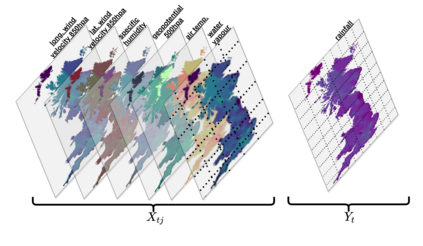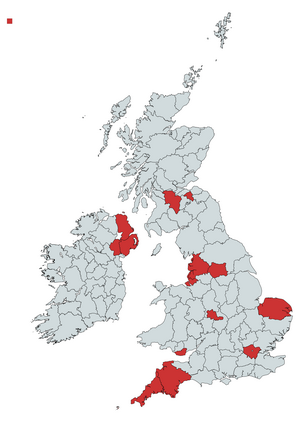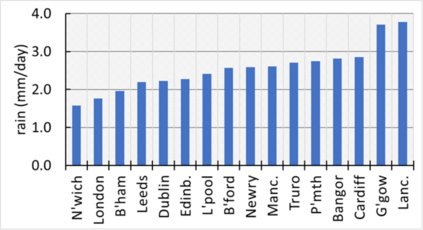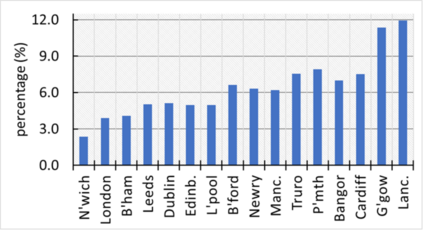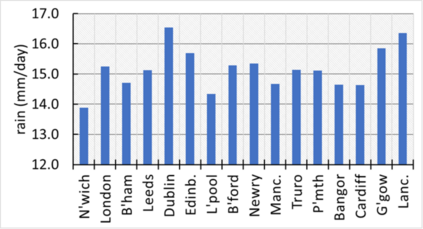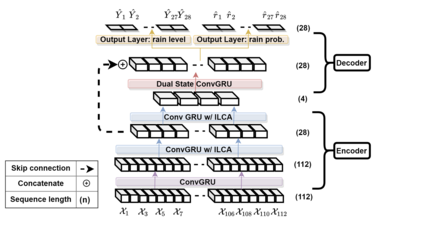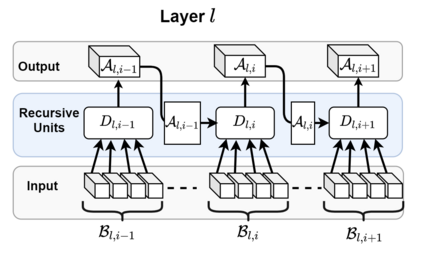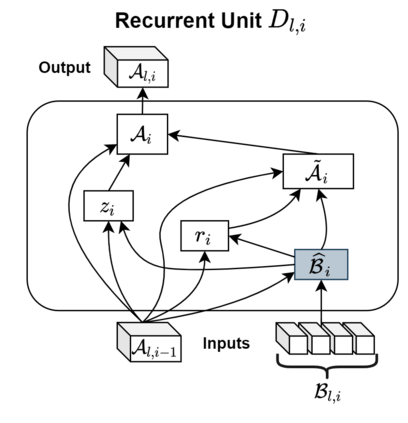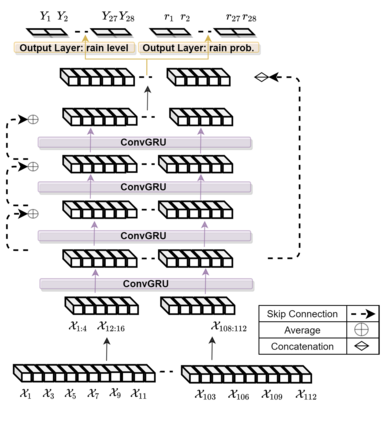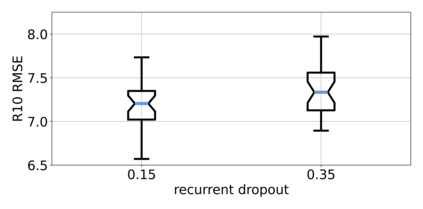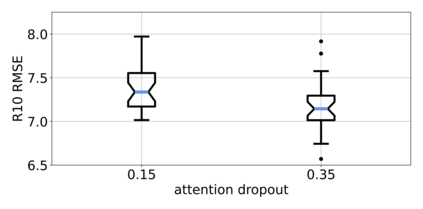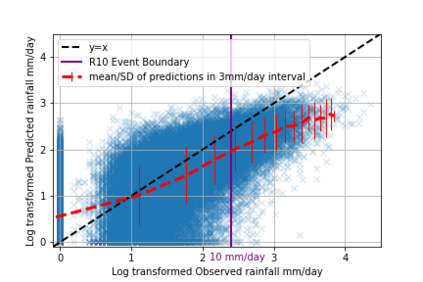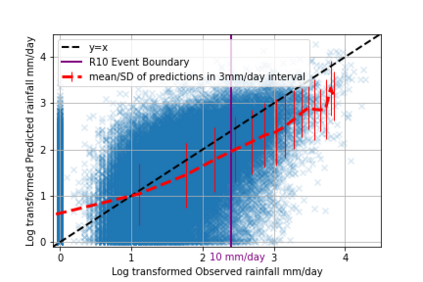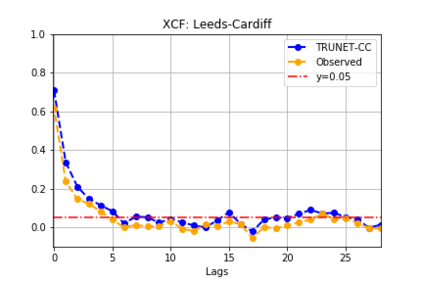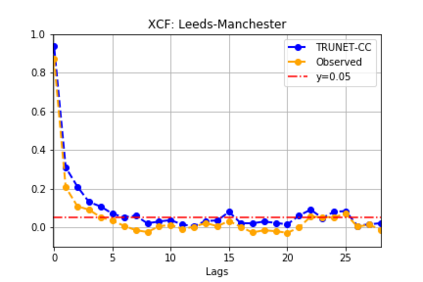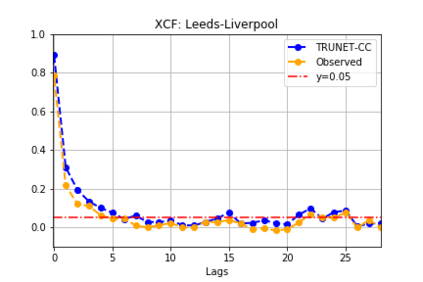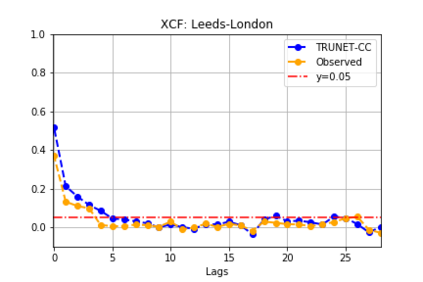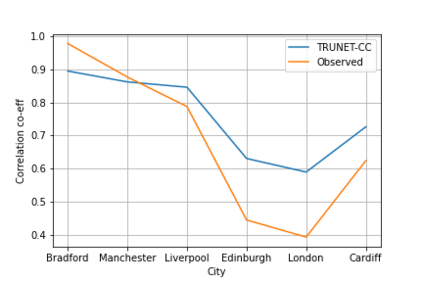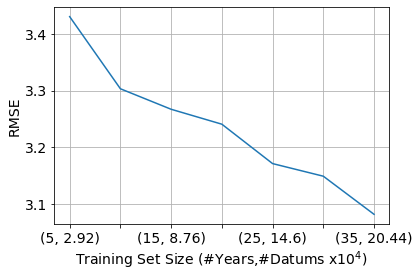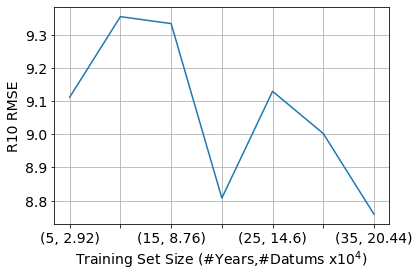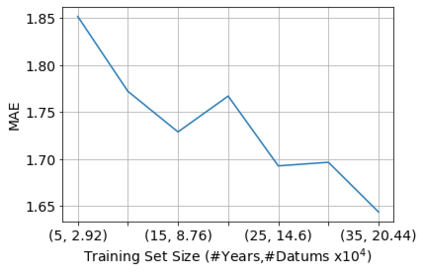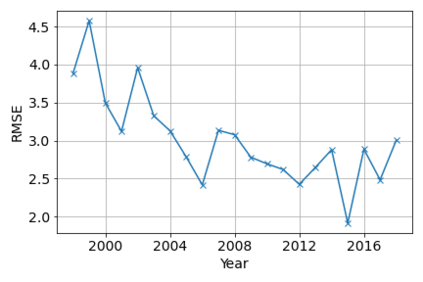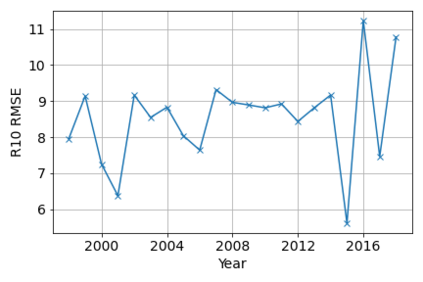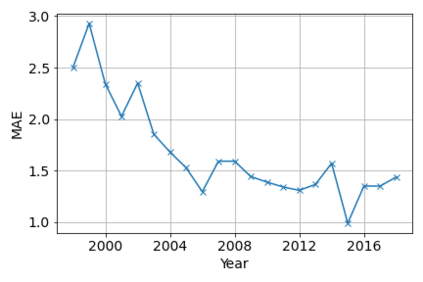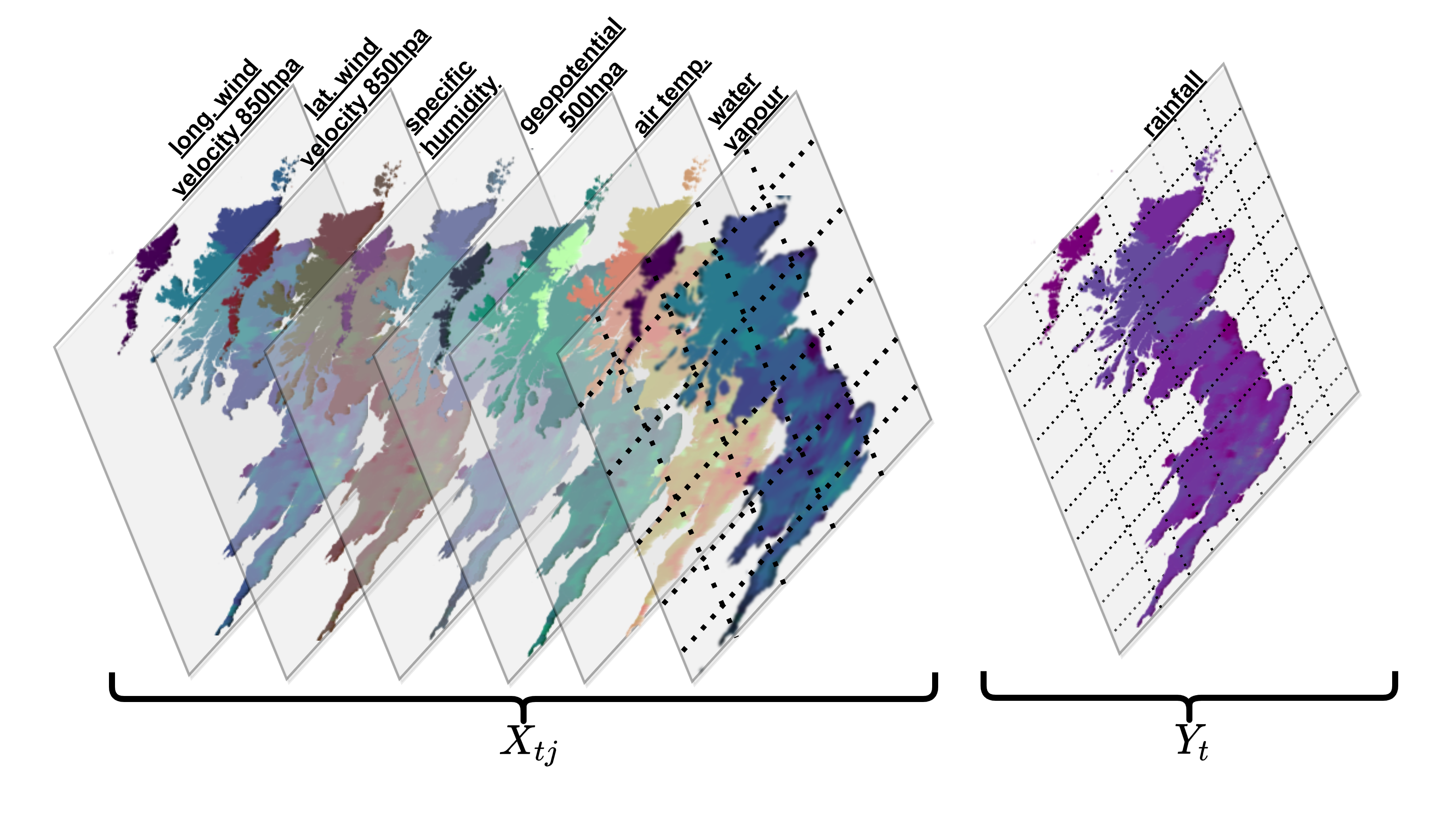Climate models (CM) are used to evaluate the impact of climate change on the risk of floods and strong precipitation events. However, these numerical simulators have difficulties representing precipitation events accurately, mainly due to limited spatial resolution when simulating multi-scale dynamics in the atmosphere. To improve the prediction of high resolution precipitation we apply a Deep Learning (DL) approach using an input of CM simulations of the model fields (weather variables) that are more predictable than local precipitation. To this end, we present TRU-NET (Temporal Recurrent U-Net), an encoder-decoder model featuring a novel 2D cross attention mechanism between contiguous convolutional-recurrent layers to effectively model multi-scale spatio-temporal weather processes. We use a conditional-continuous loss function to capture the zero-skewed %extreme event patterns of rainfall. Experiments show that our model consistently attains lower RMSE and MAE scores than a DL model prevalent in short term precipitation prediction and improves upon the rainfall predictions of a state-of-the-art dynamical weather model. Moreover, by evaluating the performance of our model under various, training and testing, data formulation strategies, we show that there is enough data for our deep learning approach to output robust, high-quality results across seasons and varying regions.
翻译:气候模型(CM)用于评估气候变化对洪水和强烈降水事件风险的影响;然而,这些数字模拟器难以准确地代表降水事件,主要原因是在模拟大气中多尺度动态时空间分辨率有限;为了改进高分辨率降水的预测,我们采用深度学习(DL)方法,利用模型领域(天气变量)的内存模拟(比当地降水更可预测的气候变量)的投入来改进高分辨率降水量的预测;为此,我们介绍了一个编码器脱coder-NET(临时经常性U-Net)模型,这是一种编码器脱coder-Decoder模型,其特点是连接的连续连续连续周期层之间的2D交叉关注机制,以有效模拟多尺度阵列时空天气过程的空间分辨率分辨率有限;我们使用一个有条件的连续损失函数来捕捉零偏差的降雨量事件模式(DL)。实验表明,我们的模型比短期降水量预测中流行的DL模型一直低RME和MAE分,并改进了对最新动态动态气象模型的降水量预测。此外,我们通过评估高质量模型的绩效,在各种数据测试和模型下充分展示了我们不同阶段的数据。

